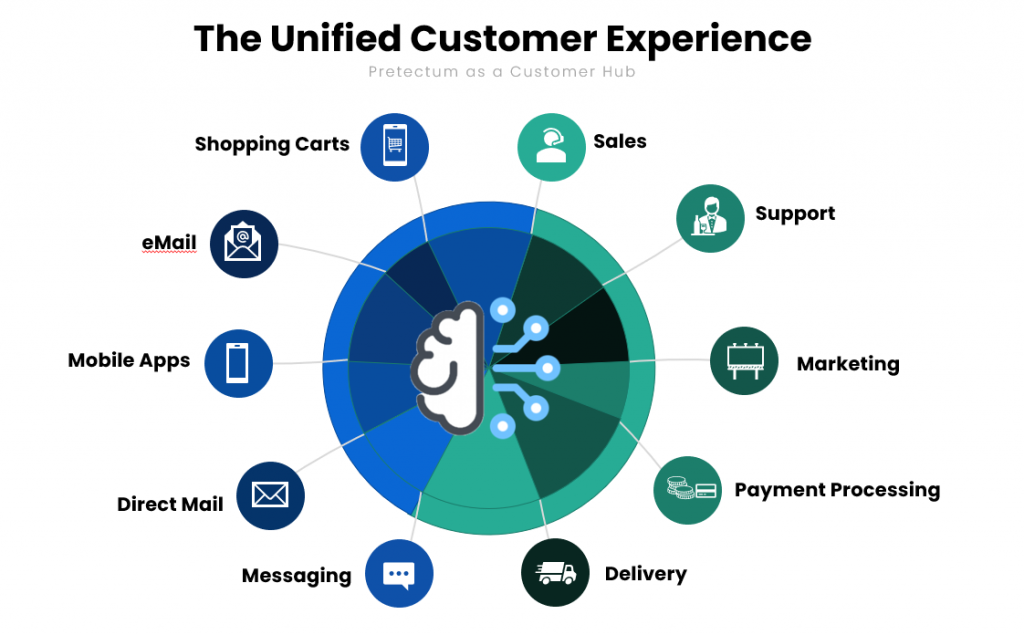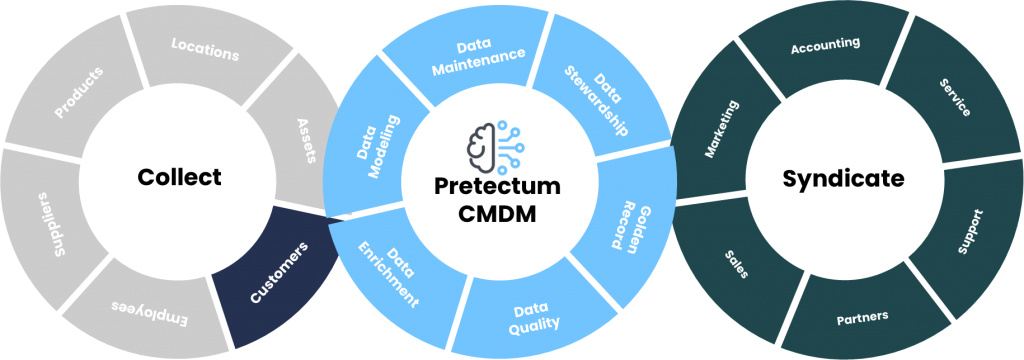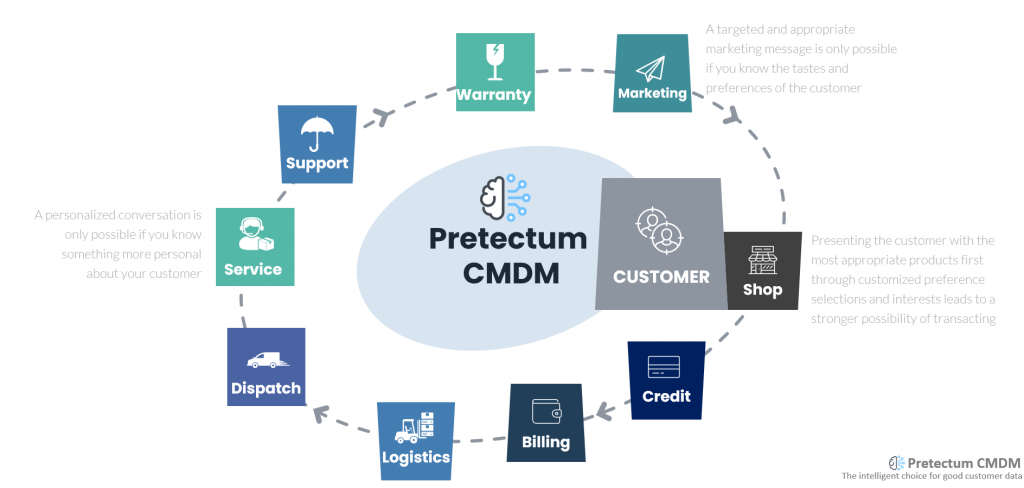A 360-degree customer view is a comprehensive understanding of customers based on data collected from various interactions across multiple channels. In the context of Customer Master Data Management (CMDM) with Pretectum, this approach offers several key benefits that enhance business operations and customer engagement.

Firstly, a 360-degree view consolidates customer data from diverse sources. This includes online and offline transactions, social media interactions, and customer service inquiries. By integrating this information, businesses create a unified profile for each customer. This profile provides insights into customer preferences, behaviours, and needs. Such clarity allows companies to tailor their marketing strategies effectively.
With a unified view, businesses can improve customer segmentation. They can group customers based on shared characteristics and behaviours. This targeted approach leads to more relevant marketing campaigns. When customers receive messages that resonate with their interests, engagement rates typically increase.
Personalisation is another significant advantage of having a 360-degree view. Businesses can craft tailored experiences that align with individual customer preferences. For instance, they can recommend products based on past purchases or suggest services that fit specific needs. This level of personalisation fosters a stronger connection between the business and the customer.
Effective decision-making relies heavily on accurate data. A 360-degree view equips organisations with the insights needed to make informed choices. Companies can identify trends, anticipate customer needs, and respond proactively. This agility in decision-making can lead to improved product offerings and enhanced customer experiences.
Moreover, a comprehensive customer view enhances customer service. Representatives gain access to complete profiles during interactions. This access allows them to resolve issues more efficiently and provide relevant solutions quickly. Customers appreciate prompt service that addresses their concerns without unnecessary delays.

Operational efficiency also benefits from a 360-degree view. By centralising data into one accessible location, businesses streamline processes. Teams spend less time searching for information across different systems and more time focusing on strategic initiatives. This efficiency can lead to cost reductions and improved productivity.
In addition to these operational benefits, a 360-degree view supports better compliance with data governance standards. As businesses collect vast amounts of customer information, maintaining data accuracy and security becomes paramount. CMDM systems like Pretectum help enforce data quality standards, ensuring that the information used for decision-making is reliable.
The scalability of CMDM systems further enhances the value of a 360-degree view. As businesses grow, so does the volume of customer data they manage. Pretectum CMDM is designed to handle this growth seamlessly, allowing organisations to expand their customer base without sacrificing data integrity or system performance.
Another critical aspect is the ability to drive innovation through advanced analytics. With CMDM’s capabilities, businesses can leverage machine learning algorithms to extract actionable insights from large datasets. This analytical power enables organisations to identify emerging trends and adapt their strategies accordingly.

In summary, adopting a 360-degree customer view through Pretectum CMDM offers numerous benefits for businesses aiming to enhance their customer relationships and operational efficiency. By centralizing data, improving conversationalist, streamlining processes, and fostering innovation, organisations can better meet customer expectations and drive sustained growth in an increasingly competitive environment.
Finally, consider that the integration of a 360-degree view within CMDM frameworks like Pretectum enables an organization to master customer data most effectively, such mastery not only improves internal operations but also strengthens relationships with the very customers whose data is stored, this is done by delivering more personalized experiences through integrations, personal experiences that might resonate more appropriately with their individual needs and preferences.
Contact us to learn how Pretectum CMDM might be of help in this.


